The P term is the term which provides the main drive to drive the process in a direction which reduces the error signal. Integral response is inherently slow and so the proportional term is needed to speed the response of the system to a change in the set point.
The integral term responds to what has happened in the past and drives the steady state error to zero and so without an I term there will be a steady state error which will allow the P term to generate some output to hold the system in balance when in its steady state.
With a 3 term controller (PID), when it's in its steady state, there will be no output from the P or D terms and all the drive to the process will come from the I term which will hold the system in a state with no steady state error and therefore no error signal into the inputs of either P or I or D.
The derivative term can be viewed as a look ahead term, it responds to what will happen in the future. Increasing proportional gain will reduce rise time but will increase overshoot but adding the D term will reduce overshoot without affecting the rise time too much. So if you leave out the D term you must have a smaller proportional gain and slower rise time in order to keep the overshoot low if low overshoot is important to you.
The D term will respond to a step input and resulting error signal by giving the system a kick in the right direction. After the initial kick the error signal into the 3 terms will be reducing and so the rate of change of error (which the D term responds to) is negative and so the D term is acting in the opposite direction to the P and I terms. The D term is putting the brakes on to reduce overshoot.
Rapid changes in the set point will initially result in the D term giving the system a kick in the right direction but this can create quite a problem in a noisy environment.

